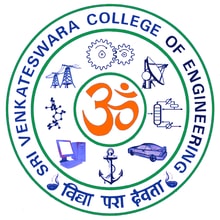The sensors included in wearable devices depend entirely on the function and design of the device. IoT has become a big deal with sensor development as it spreads rapidly to science, industry, and even daily life. This folio discusses the role of IoT in modern materials chemists look into the trends in this field. It aims to form realistic knowledge that can be used in actual research field through theory and practice focused on ChemIoT.
Vital signs are used to measure the body's basic functions. These measurements are taken to assess the general physical health of a person, giving clues to possible diseases and to show progress towards recovery.
There are four primary vital signs;
- Body temperature
- Blood pressure
- Pulse (heart rate)
- Breathing rate (respiratory rate)
However, depending on the clinical setting, the vital signs may include other measurements called the "fifth vital sign" or "sixth vital sign". Vital signs are recorded using the sensors constructed based on metal, metal oxide, polymers and its composites. The technology revolution in the miniaturization of electronic devices is enabling to design more reliable and adaptable wearables, contributing for a world-wide change in the health monitoring approach. The next part discusses each of these signs, in terms of signal origin, medical and health importance, wearable sensors technology state-of-the-art.
- Temperature sensing devices: The most recent examples of flexible temperature sensors are first discussed with regard to their materials, structures, electrical and mechanical properties; temperature sensing network technologies in new materials and structural designs are then presented based on platforms comprising of multiple physical sensors and stretchable electronics.
- Blood pressure sensing devices: Blood Pressure can be measured both by invasive and non-invasive methods. In the non-invasive method, no piercing is required and is used easily. Blood Pressure Sensor is used to measure the blood pressure using the non-invasive method. It is similar to sphygmomanometer but instead of the mercury column, a pressure sensor is used to detect the blood pressure.
- Respiratory rate monitoring devices: Monitoring respiration rate is an important task while evaluating a subject's health. Respiration rate monitoring devices can be classified by a number of ways depending on the manner of their use and their operation. There is an ever-growing demand for measuring respiratory variables during a variety of applications, including monitoring in clinical and occupational settings, and during sporting activities and exercise.
- Pulse or heart rate sensing devices: The preliminary research constructs the heart beat or pulse measurement for medical devices. The research prototype focuses the pulse rate and analysis system which consists of hardware and software parts.
- Blood oxygen saturation sensing devices: Lack of oxygen, commonly termed as hypoxia, is frequently encountered in different disease states and is detrimental to human life. However, at the end of the 19th century, Paul Bert and James Lorrain Smith identified what is known as oxygen toxicity. The molecular basis of this phenomenon is oxygen's readiness to accept electrons and to form different variants of aggressive radicals that interfere with normal cell functions.
- Height, weight and body mass index (BMI) sensing devices: A number of different techniques for body composition assessment have been developed, from very simple indirect measures such as waist-to-hip ratio and calipers to sophisticated direct volumetric measurements based on three-dimensional imaging techniques. There are also a range of invasive or in vitro methods for body composition analysis such as inhalation or injection of water-accumulating or fat-accumulating agents, or dissection and chemical analysis of cadavers.
- Pain sensing devices: Facial expressions are among behavioural signs of pain that can be employed as an entry point to develop an automatic human pain assessment tool. Such a tool can be an alternative to the self-report method and particularly serve patients who are unable to self-report like patients in the intensive care unit and minors. A wearable device with a biosensing facial mask is proposed to monitor pain intensity of a patient by utilizing facial surface electromyogram. The wearable device works as a wireless sensor node and is integrated into an Internet of Things system for remote pain monitoring.
The Internet of Chemical Things is perched to alter further research for the better sensor developments. We believe it is time to protect our precious human resource by allowing our materials to assist sensor for our future biomedical development. In the next few years chemistry will change in the ways outlined.
By
Dr. S. Ananda Babu
Assistant Professor
Department of Applied Chemistry
SVCE



